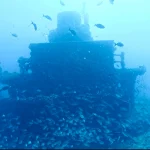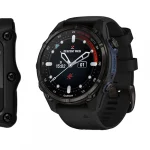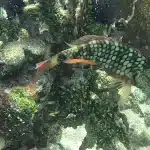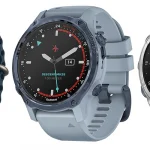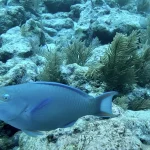Table of Contents
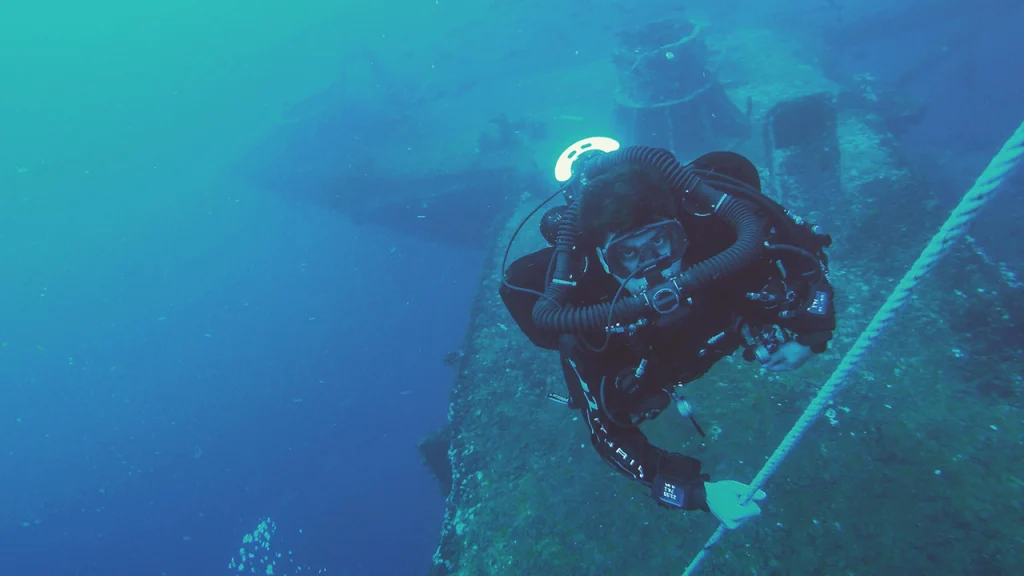
The USS Oriskany (CV/CVA-34) was an Essex-class aircraft carrier that served in the Korean and Vietnam Wars. After being decommissioned in 1976, it was eventually prepared to be sunk as an artificial reef off the coast of Pensacola, Florida in 2006.
Key Takeaways
- The USS Oriskany is a massive artificial reef, intentionally sunk to promote marine life.
- Artificial reefs like the Oriskany provide habitats for various marine species, including corals.
- Coral growth on artificial reefs can be influenced by factors such as water quality and depth.
- Divers need to follow specific guidelines to ensure their safety when exploring the Oriskany.
- Marine conservation efforts can be supported through responsible diving and advocacy.
Introduction to the USS Oriskany Artificial Reef
The USS Oriskany, affectionately known as the “Mighty O,” is a fascinating example of how human-made structures can be repurposed to benefit the environment. This former aircraft carrier, which served the U.S. Navy for over 25 years, now rests at the bottom of the Gulf of Mexico, serving a new purpose as an artificial reef.
The Sinking of USS Oriskany
The decision to sink the USS Oriskany was not taken lightly. It was a collaborative effort between the U.S. Navy, Florida Fish and Wildlife Conservation Commission (FWC), and Escambia County. On May 17, 2006, the Oriskany was deliberately sunk approximately 22.5 nautical miles southeast of Pensacola Pass.
The sinking was a meticulously planned event, aiming to create a new habitat for marine life. The ship, measuring 911 feet in length, was carefully prepared to ensure that it would settle upright on the seafloor, minimizing potential hazards to divers and marine life.
Location and Depth Details
The Oriskany now sits at a depth of 212 feet, making it accessible to experienced divers. The uppermost structure of the ship is at a shallower depth, around 84 feet, allowing for different levels of exploration. This range in depth creates varied environments for marine species, contributing to the reef’s biodiversity. For more information on similar dive sites, check out the USS Massachusetts shipwreck.
- Latitude: 30 degrees 2 minutes 33.3 seconds North
- Longitude: 87 degrees 0 minutes 0.1 seconds West
These coordinates place the Oriskany in a prime location for coral development, as the warm waters of the Gulf are conducive to coral growth.
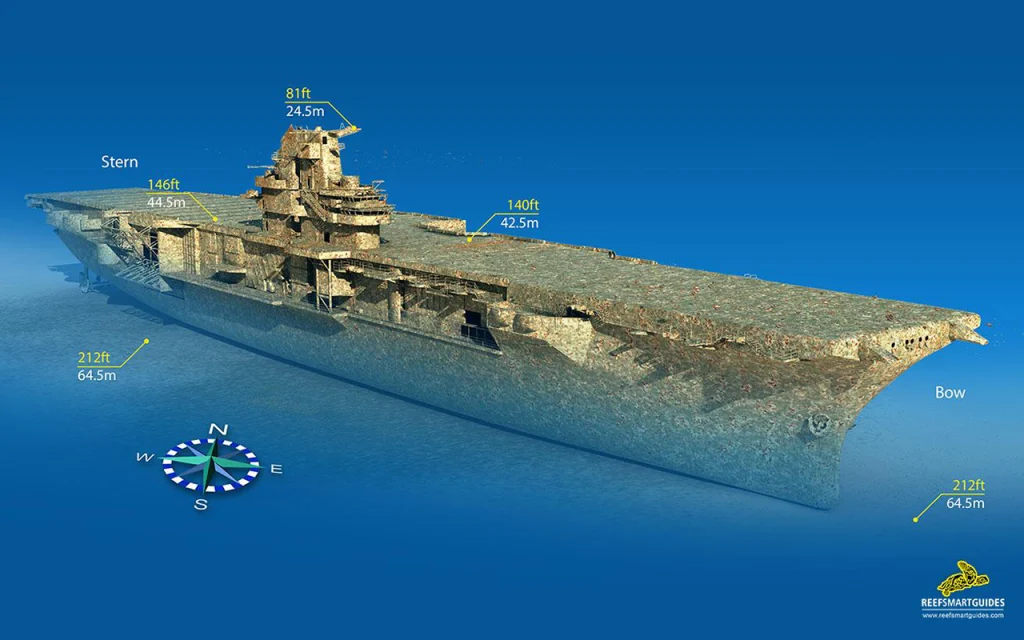
Initial Reactions and Expectations
When the Oriskany was first sunk, there was a mix of excitement and curiosity. Many wondered how quickly marine life would colonize the new structure and whether it would live up to its potential as a thriving artificial reef.
- Scientists anticipated rapid colonization by marine species.
- Divers were eager to explore the new underwater attraction.
- Environmentalists hoped for a positive impact on local biodiversity.
Initial observations showed promise, with fish and other marine creatures quickly taking up residence. However, the true test of success would be the development of coral on the reef.
Understanding Artificial Reefs
Artificial reefs are man-made structures placed in the ocean to mimic the characteristics of natural reefs. They serve as habitats for marine life, providing shelter, food, and breeding grounds. The USS Oriskany is a prime example of such an effort.
Purpose and Benefits of Artificial Reefs
Artificial reefs like the Oriskany offer numerous benefits to the marine ecosystem. They help alleviate pressure on natural reefs by providing alternative habitats for marine species. This can lead to increased biodiversity and healthier marine environments.
Besides that, artificial reefs can boost local economies through tourism and fishing. Divers are drawn to these unique underwater sites, and the abundance of fish can support commercial and recreational fishing industries.
Types of Artificial Reefs
There are several types of artificial reefs, each with its own purpose and design. Some common types include: shipwreck reefs.
- Shipwrecks: Decommissioned ships like the Oriskany, intentionally sunk to create reefs.
- Concrete Structures: Man-made concrete modules designed to provide habitats for marine life.
- Natural Materials: Items like rocks or boulders placed in the ocean to form reefs.
Each type of artificial reef offers unique benefits and challenges, contributing to the overall diversity of marine habitats.
Challenges in Creating Artificial Reefs
While artificial reefs provide many benefits, they also come with challenges. Ensuring the long-term stability and safety of these structures is crucial. Factors such as water quality, depth, and potential hazards must be carefully considered.
Moreover, ongoing monitoring and maintenance are essential to ensure that the reef continues to provide a suitable habitat for marine life. This requires collaboration between scientists, government agencies, and local communities.
Methodology of the Coral Development Study
The study of coral development on the USS Oriskany aimed to understand how corals colonize artificial structures and what factors influence their growth. This knowledge can help improve the design and implementation of future artificial reefs.
Study Objectives
The primary objectives of the study were to assess the coral development on the Oriskany Reef.
- To monitor the species of corals colonizing the Oriskany.
- To measure the rate of coral growth on the artificial reef.
- To identify factors affecting coral development.
- To compare the coral growth on the Oriskany with that on natural reefs.
By achieving these objectives, researchers hoped to gain valuable insights into the potential of artificial reefs to support coral ecosystems.
Parameters Monitored
In the study of coral development on the USS Oriskany, several key parameters were closely monitored to ensure a comprehensive understanding of the process. These parameters included:
- Water Temperature: Corals are highly sensitive to temperature changes, which can affect their growth and health.
- Salinity Levels: The salinity of the water can influence coral development and the types of species that can thrive.
- Light Availability: Light is essential for the photosynthetic processes of many coral species.
- Water Quality: This includes monitoring pollutants and nutrient levels that can impact coral health.
- Depth: Different coral species prefer varying depths, and this affects their colonization patterns.
By monitoring these parameters, researchers could identify the conditions that best support coral growth on artificial reefs like the Oriskany.
Findings on Coral Growth and Development
The findings from the study provided valuable insights into how corals develop on artificial reefs. These insights can help improve the design and implementation of future artificial reef projects.
One of the most significant observations was the diversity of coral species that colonized the Oriskany. This diversity indicated that the artificial reef was providing a suitable habitat for various types of corals, contributing to the overall biodiversity of the area.
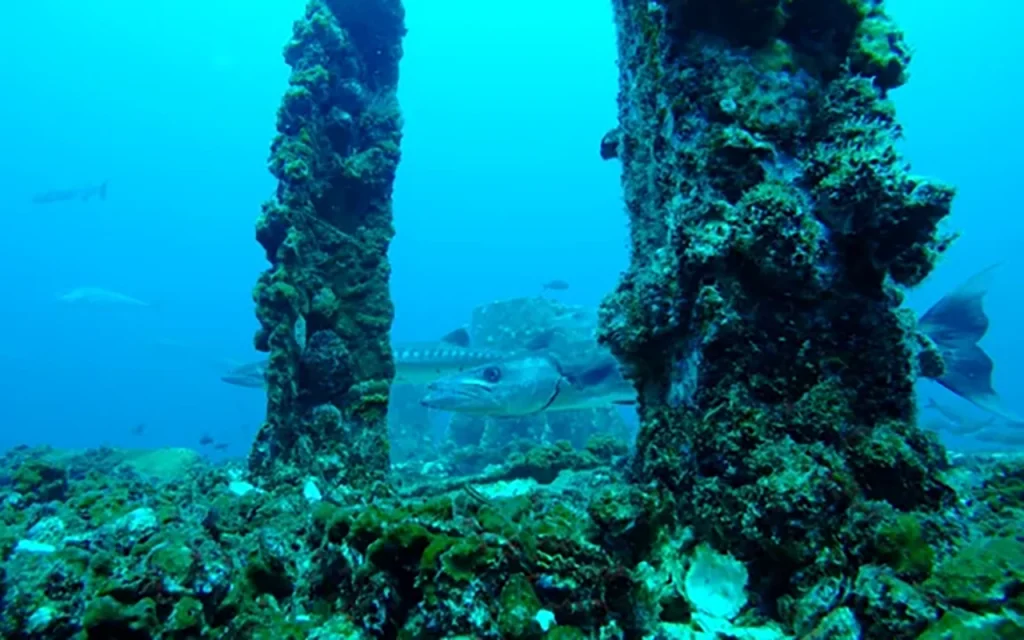
Species of Corals Observed
Several species of corals were observed on the USS Oriskany, each contributing to the reef’s ecosystem in unique ways. Some of the notable species included:
- Staghorn Coral: Known for its branching structure, this coral provides habitat for many marine species.
- Elkhorn Coral: Another branching coral, elkhorn coral is crucial for reef building.
- Brain Coral: Named for its grooved surface, brain coral plays a vital role in reef structure.
- Star Coral: This coral is known for its star-shaped polyps and contributes to the reef’s complexity.
The presence of these species indicated that the Oriskany was supporting a healthy and diverse coral community.
Rate of Coral Growth
The rate of coral growth on the Oriskany varied depending on the species and environmental conditions. On average, corals were observed to grow at a rate comparable to that on natural reefs, with some species showing even faster growth due to the favorable conditions provided by the artificial structure.
Factors such as water temperature, light availability, and nutrient levels played a significant role in determining the growth rate of corals. By optimizing these conditions, researchers believe that artificial reefs can support rapid coral development.
Factors Affecting Coral Development
Several factors were found to influence coral development on the USS Oriskany:
- Water Quality: High levels of pollutants or nutrients can negatively impact coral health.
- Temperature: Corals thrive in specific temperature ranges, and deviations can cause stress.
- Light Availability: Sufficient light is essential for photosynthetic corals to grow and thrive.
- Depth: Different species prefer different depths, affecting their colonization patterns.
- Current Flow: Strong currents can bring nutrients but also cause physical stress to corals.
Understanding these factors helps in creating optimal conditions for coral growth on artificial reefs.
Comparison with Natural Reefs
When comparing the coral development on the USS Oriskany to that on natural reefs, several key differences and similarities were observed:
| Aspect | Artificial Reef (USS Oriskany) | Natural Reef |
|---|---|---|
| Species Diversity | High, with various species colonizing the structure | Typically high, depending on location |
| Growth Rate | Comparable to natural reefs, with some species showing faster growth | Varies, but generally consistent with environmental conditions |
| Environmental Impact | Positive, providing new habitats and relieving pressure on natural reefs | Natural reefs are critical for marine biodiversity and ecosystem health |
Overall, the artificial reef showed promising results in supporting coral development, offering an effective alternative to natural reefs.
Implications for Marine Conservation
The findings from the coral development study on the USS Oriskany have significant implications for marine conservation efforts. Artificial reefs can play a crucial role in enhancing marine biodiversity and supporting healthy ecosystems.
Enhancement of Marine Biodiversity
Artificial reefs like the Oriskany provide new habitats for marine species, promoting biodiversity. By offering shelter, food, and breeding grounds, these structures help support a wide range of marine life, from fish to invertebrates to corals.
Most importantly, artificial reefs can help alleviate the pressure on natural reefs, which are often threatened by human activities and environmental changes. By providing alternative habitats, artificial reefs contribute to the overall health and resilience of marine ecosystems.
Potential for Future Artificial Reefs
The success of the USS Oriskany as an artificial reef highlights the potential for future projects. By carefully planning and implementing artificial reefs, we can create new opportunities for marine conservation and ecosystem restoration.
However, it is essential to consider the long-term sustainability of these projects. Ongoing monitoring, maintenance, and research are crucial to ensure that artificial reefs continue to provide benefits to marine life and the environment.
Actions for Marine Enthusiasts
As marine enthusiasts, there are several actions we can take to support artificial reefs and marine conservation efforts:
- Practice Responsible Diving: Follow guidelines and safety protocols to minimize your impact on marine environments.
- Support Conservation Organizations: Donate to or volunteer with organizations working to protect and restore marine ecosystems.
- Advocate for Marine Protection: Raise awareness about the importance of marine conservation and advocate for policies that protect marine habitats.
- Participate in Citizen Science: Contribute to research and monitoring efforts by participating in citizen science projects.
- Educate Others: Share your knowledge and passion for marine conservation with others, inspiring them to take action.
Notable Marine Life to Observe
The USS Oriskany artificial reef is home to a wide variety of marine life, making it a fascinating site for divers. Some notable species you might encounter include:
- Goliath Grouper: These massive fish are often seen around the reef, taking advantage of the shelter provided by the ship.
- Sea Turtles: Various species of sea turtles can be spotted swimming around the Oriskany, adding to the site’s allure.
- Colorful Reef Fish: From angelfish to parrotfish, the reef is teeming with vibrant fish species.
- Crustaceans: Look for lobsters, crabs, and shrimp hiding in the nooks and crannies of the ship.
- Corals: As discussed, the Oriskany is home to various coral species, each contributing to the reef’s ecosystem.
These species, along with many others, make the Oriskany a dynamic and exciting dive site. Keep your eyes peeled and your camera ready to capture the incredible marine life you’ll encounter. Learn more about the Oriskany Reef.
Frequently Asked Questions (FAQ)
What is the primary purpose of the USS Oriskany artificial reef?
The primary purpose of the USS Oriskany artificial reef is to provide a new habitat for marine life, promoting biodiversity and alleviating pressure on natural reefs. It also serves as a unique dive site, attracting divers from around the world.
How does an artificial reef benefit marine life?
Artificial reefs benefit marine life by offering shelter, food, and breeding grounds. They create new habitats that support a diverse range of species, contributing to healthier and more resilient marine ecosystems.
What types of corals have been observed on the Oriskany?
Several species of corals have been observed on the USS Oriskany, including staghorn coral, elkhorn coral, brain coral, and star coral. These species contribute to the reef’s biodiversity and provide essential habitats for other marine organisms.
What precautions should divers take when visiting the Oriskany reef?
– Plan your dive and stay within your limits.
– Check current conditions and use a dive guide if needed.
– Follow safety guidelines, such as using the buddy system and carrying essential safety equipment.
– Avoid entering the interior of the ship to prevent accidents.
– Respect marine life and avoid touching or disturbing corals and other creatures.
How can I contribute to marine conservation efforts?
– Practice responsible diving and minimize your impact on marine environments.
– Support conservation organizations through donations or volunteering.
– Advocate for marine protection policies and raise awareness about the importance of conservation.
– Participate in citizen science projects to contribute to research and monitoring efforts.
– Educate others about marine conservation and inspire them to take action.
North Florida Wrecks
- USS Oriskany
- USS Massachusetts
- SS Tarpon
- SS Gulf America
- Empire Mica
- USS Chippewa
- Avocet
- Black Bart
- The Vamar
- San Pablo
- USS Narcissus
- The Loftus Wreck
- The Dorothy Louise
- The Mizpah
- MV Janet
- The Eidsvag
- YDT-14 and YDT-15
- USS Strength
- Miss Louise
- The Lulu
- PC-1174
- Three Coal Barges
- USS Accokeek (ATA-181)
- El Dorado
- The Grey Ghost
- The Pete Tide II
- Red Sea Tug

